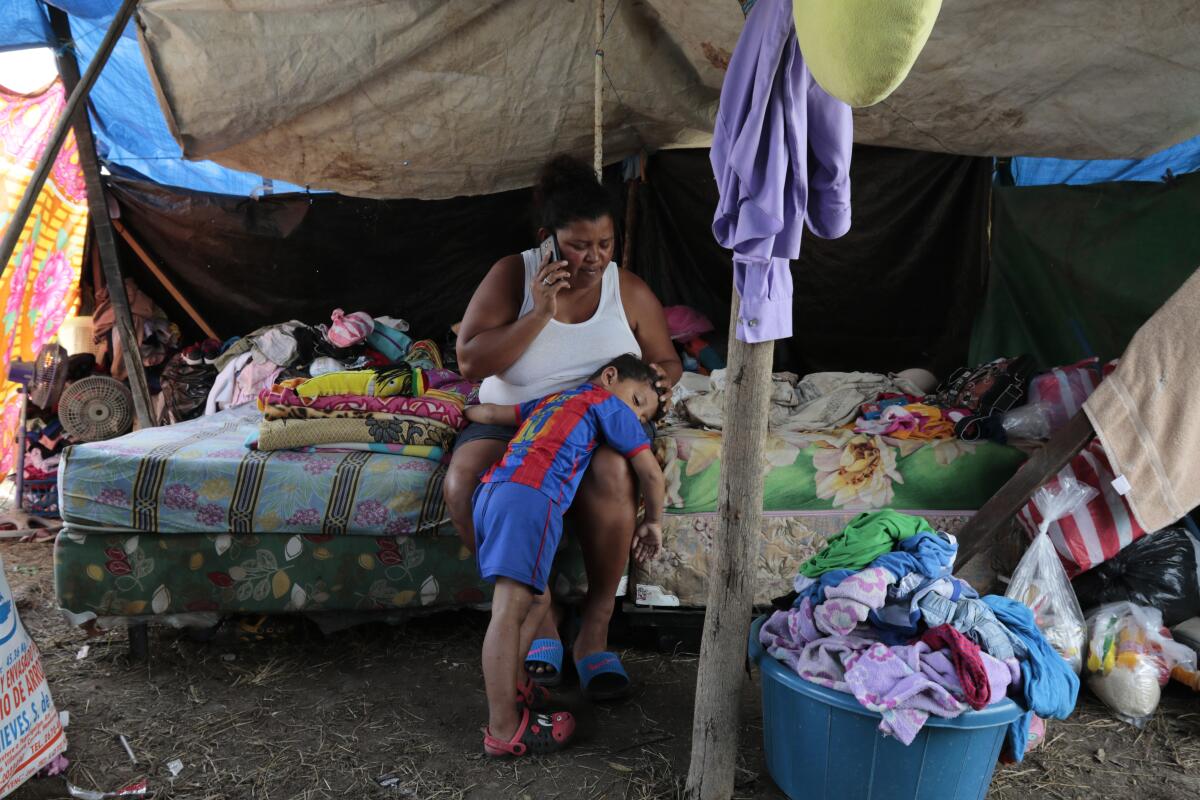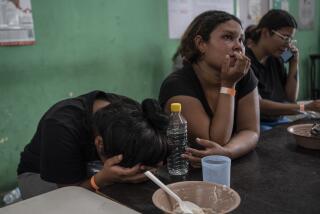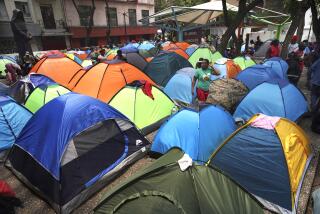Editorial: Double hurricanes could make the Central America migration crisis even worse

It’s unclear at this point exactly how much death and damage have been inflicted in Nicaragua and Honduras by Hurricane Iota, the second major storm to strike the region in as many weeks. But it will be considerable — winds raging at 155 mph stripped roofs from buildings and blew other structures apart as rain drenched land already sodden from the previous storm, Hurricane Eta.
And Iota, which made landfall late Monday, struck before rescue crews could reach remote villages devastated by Eta, which suggests the world is seeing a crisis compounded by an unfolding catastrophe.
The region was troubled enough before the hurricanes arrived. Rural communities in Honduras and its western neighbor Guatemala have been suffering from five years of drought, and the soaking they received from these storms won’t magically end that scourge. The drought has been made worse by climate change, the same force that scientists believe is fueling stronger and more volatile tropical storm systems.
Iota is a case in point. It emerged as a tropical depression early Friday and grew into a tropical storm later in the day. By midnight Saturday it was a Category 1 hurricane, the weakest on the scale; on Monday morning it reached Category 5 status with winds topping 160 mph before weakening slightly as it hit the Nicaraguan coast.
The drought had already led to significant human migration from the region as impoverished and starving people dependent on the agrarian economy had little left to keep them in place. With violent gangs wielding significant power in sections of Honduras and Guatemala, migrants flowed north through Mexico to the U.S., adding to the humanitarian crisis at the border that has waxed and waned for several years.
Then came the COVID-19 pandemic to undermine already-weak economies.
Chances are, the hurricanes will only make these situations worse. It has long been apparent that the best approach for combating migration from Central America is to help stabilize the governments, disrupt the gangs and build a local and inclusive economy sufficient to support the people who live there.
Will Trump stick around to witness the swearing-in of Joe Biden as his successor? Or will he skip it and tweet from self-exile at Mar-A-Lago?
But that has proved to be a difficult task, exacerbated by what seems to be endemic corruption. And absent a short-term fix, the region is likely to see more migration as damage from the hurricanes makes a difficult region in which to live yet more uninhabitable.
Add that to the overflowing buffet of problems confronting the Biden administration when it takes over Jan. 20.
More to Read
A cure for the common opinion
Get thought-provoking perspectives with our weekly newsletter.
You may occasionally receive promotional content from the Los Angeles Times.










